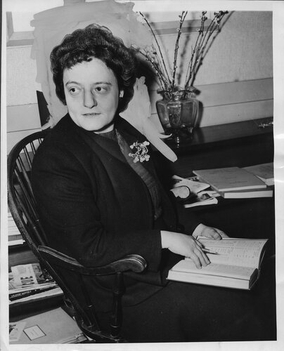External links
- Program in Aegean Scripts and Prehistory (PASP), University of Texas at Austin
- Profile with Curriculum vitae: Thomas G. Palaima : August 2024
Thomas G. Palaima (born October 6, 1951) is a Mycenologist, the Robert M. Armstrong Centennial Professor and the founding director of the university's Program in Aegean Scripts and Prehistory (PASP) [1] in the Department of Classics at the University of Texas at Austin.
Palaima was born in Cleveland, Ohio on October 6, 1951. He received his B.A. in mathematics and classics from Boston College (1973) and a Ph.D. in classics from the University of Wisconsin–Madison (1980). On May 27, 1994, Palaima received an honorary doctorate from the Faculty of Humanities at Uppsala University, Sweden [2]
Palaima received a five-year MacArthur fellowship in 1985 for work on Aegean scripts. In this area of research, he has focused on paleography, scribal systems, and the use of the Linear B tablets to answer questions about many aspects of life in Greek prehistory. [3]
His other interests include writing public intellectual commentaries (over 300 since 1999 [4] ), reviewing books on a broad range of subjects ancient and modern, [5] and researching, writing, teaching, and lecturing about how humans, in groups or as individuals, respond to war and violence. [6] He has served as academic co-director of the NEH Aquila Warrior Chorus Project in Austin for now three iterations 2016 into 2020. [7] He also has helped to provide impoverished adults the opportunity to return to higher education through an innovative program that focuses on the humanities. [8]
He has written extensively about music, especially about Bob Dylan and his cultural influence. [9]
He has also studied and written about problems with NCAA athletics within American institutions of higher education. [10] From 2008 through 2011, he was the representative of the University of Texas at Austin on the national Coalition on Intercollegiate Athletics. [11]
He also has written about problems in higher education. [12]
https://sites.utexas.edu/scripts/about-pasp/== References ==

Linear B is a syllabic script that was used for writing in Mycenaean Greek, the earliest attested form of the Greek language. The script predates the Greek alphabet by several centuries, the earliest known examples dating to around 1400 BC. It is adapted from the earlier Linear A, an undeciphered script perhaps used for writing the Minoan language, as is the later Cypriot syllabary, which also recorded Greek. Linear B, found mainly in the palace archives at Knossos, Kydonia, Pylos, Thebes and Mycenae, disappeared with the fall of Mycenaean civilization during the Late Bronze Age collapse. The succeeding period, known as the Greek Dark Ages, provides no evidence of the use of writing.

Michael George Francis Ventris, was an English architect, classicist and philologist who deciphered Linear B, the ancient Mycenaean Greek script. A student of languages, Ventris had pursued decipherment as a personal vocation since his adolescence. After creating a new field of study, Ventris died in a car crash a few weeks before the publication of Documents in Mycenaean Greek, written with John Chadwick.

Mycenaean Greece was the last phase of the Bronze Age in ancient Greece, spanning the period from approximately 1750 to 1050 BC. It represents the first advanced and distinctively Greek civilization in mainland Greece with its palatial states, urban organization, works of art, and writing system. The Mycenaeans were mainland Greek peoples who were likely stimulated by their contact with insular Minoan Crete and other Mediterranean cultures to develop a more sophisticated sociopolitical culture of their own. The most prominent site was Mycenae, after which the culture of this era is named. Other centers of power that emerged included Pylos, Tiryns, and Midea in the Peloponnese, Orchomenos, Thebes, and Athens in Central Greece, and Iolcos in Thessaly. Mycenaean settlements also appeared in Epirus, Macedonia, on islands in the Aegean Sea, on the south-west coast of Asia Minor, and on Cyprus, while Mycenaean-influenced settlements appeared in the Levant and Italy.

Mycenaean Greek is the most ancient attested form of the Greek language, on the Greek mainland and Crete in Mycenaean Greece, before the hypothesised Dorian invasion, often cited as the terminus ad quem for the introduction of the Greek language to Greece. The language is preserved in inscriptions in Linear B, a script first attested on Crete before the 14th century BC. Most inscriptions are on clay tablets found in Knossos, in central Crete, as well as in Pylos, in the southwest of the Peloponnese. Other tablets have been found at Mycenae itself, Tiryns and Thebes and at Chania, in Western Crete. The language is named after Mycenae, one of the major centres of Mycenaean Greece.
The Thebes tablets, with inscriptions in Mycenaean Greek using Linear B, were discovered in Thebes, Greece. They belong to the Late Helladic IIIB context, contemporary with finds at Pylos. A first group of 21 fragments was found in the 1963–64 campaign; A further 19 tablets were found in 1970 and 1972. Using Near Eastern cylinder seals associated with the finds, the editors of the published corpus of the whole archive now date the destruction of the Kadmeion, the Mycenaean palace complex at Thebes, and thus the writing of the tablets, some of which were still damp when they were unintentionally fired, to shortly after 1225 BC. Chadwick identified three recognizable Hellenic divinities, Hera, Hermes and Potnia "Mistress", among the recipients of wool. He made out a case for ko-ma-we-te-ja, also attested at Pylos, as the name of a goddess.

Anax is an ancient Greek word for "tribal chief, lord (military) leader". It is one of the two Greek titles traditionally translated as "king", the other being basileus, and is inherited from Mycenaean Greece. It is notably used in Homeric Greek, e.g. for Agamemnon. The feminine form is anassa, "queen".

Alice Elizabeth Kober was an American classicist best known for her work on the decipherment of Linear B. Educated at Hunter College and Columbia University, Kober taught classics at Brooklyn College from 1930 until her death. In the 1940s, she published three major papers on the script, demonstrating evidence of inflection; her discovery allowed for the deduction of phonetic relationships between different signs without assigning them phonetic values, and would be a key step in the eventual decipherment of the script.

Nichoria is a site in Messenia, on a ridgetop near modern Rizomylos, at the northwestern corner of the Messenian Gulf. From the Middle to Late Bronze Age it cultivated olive and terebinth for export. During the Helladic period it was part of the Mycenaean civilisation.

William Andrew "Bill" McDonald was a Canadian archaeologist. Educated at the University of Toronto and at Johns Hopkins University, he took part in the early excavations of Carl Blegen at the Mycenaean site known as the "Palace of Nestor" at Pylos, where he excavated the first Linear B tablets discovered in mainland Greece.
The Pylos Regional Archaeological Project is a diachronic and multi-disciplinary archaeological expedition established in 1990. Its purpose is to study the history of prehistoric and historic settlement in southwestern Greece. The focus of the expedition entails surveying the Bronze Age administrative center known as the Palace of Nestor. Its directors were Professors Jack L. Davis, John Bennet, Susan E. Alcock, Cynthia Shelmerdine, and Yannis Lolos.

Jack L. Davis is Carl W. Blegen Professor of Greek Archaeology at the University of Cincinnati in Ohio and is a former director of the American School of Classical Studies at Athens.
Malcolm H. Wiener is an American attorney, prehistorian and philanthropist. Most notably, Wiener has served as general counsel of the Archaeological Institute of America, as an advisor for the United States Department of State and as principal and chairman of The Millburn Ridgefield Corporation and ShareInVest, both asset management firms.

The Throne Room was a chamber built for ceremonial purposes during the 15th century BC inside the palatial complex of Knossos, Crete, in Greece. It is found at the heart of the Bronze Age palace of Knossos, one of the main centers of the Minoan civilization and is considered the oldest throne room in Europe.
Emmett Leslie Bennett Jr. was an American classicist and philologist whose systematic catalog of its symbols led to the solution of reading Linear B, a 3,300-year-old syllabary used for writing Mycenaean Greek hundreds of years before the Greek alphabet was developed. Archaeologist Arthur Evans had discovered Linear B in 1900 during his excavations at Knossos on the Greek island of Crete and spent decades trying to comprehend its writings until his death in 1941. Bennett and Alice Kober cataloged the 80 symbols used in the script in his 1951 work The Pylos Tablets, which provided linguist John Chadwick and amateur scholar Michael Ventris with the vital clues needed to finally decipher Linear B in 1952.

Eritha was a Mycenaean priestess. She was a subject of the Mycenaean state of Pylos, in the southwestern Peloponnese, based at the cult site of Sphagianes, near the palatial centre of Pylos.

The military nature of Mycenaean Greece in the Late Bronze Age is evident by the numerous weapons unearthed, warrior and combat representations in contemporary art, as well as by the preserved Greek Linear B records. The Mycenaeans invested in the development of military infrastructure with military production and logistics being supervised directly from the palatial centres.
Cynthia Wright Shelmerdine is an American classicist and archaeologist, known for her researches into Mycenaean culture and history. She is Robert M. Armstrong Centennial professor emerita at the University of Texas, Austin.

The University of Minnesota Messenia Expedition (UMME) was an archaeological expedition in Messenia, Greece, conducted between 1953 and 1975. It was devised and begun by William McDonald, who also served as its director for most of its duration.

PY Ta 641, sometimes known as the Tripod Tablet, is a Mycenaean clay tablet inscribed in Linear B, currently displayed in the National Archaeological Museum, Athens. Discovered in the so-called "Archives Complex" of the Palace of Nestor at Pylos in Messenia in June 1952 by the American archaeologist Carl Blegen, it has been described as "probably the most famous tablet of Linear B".